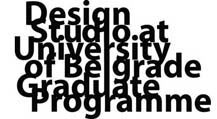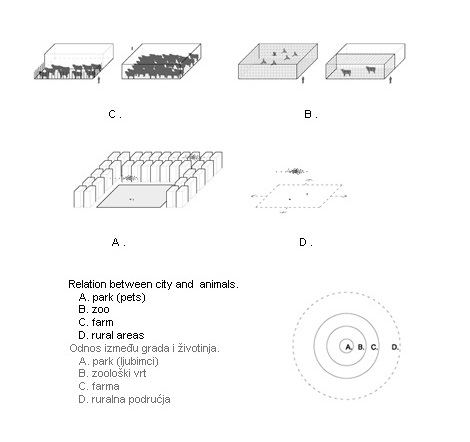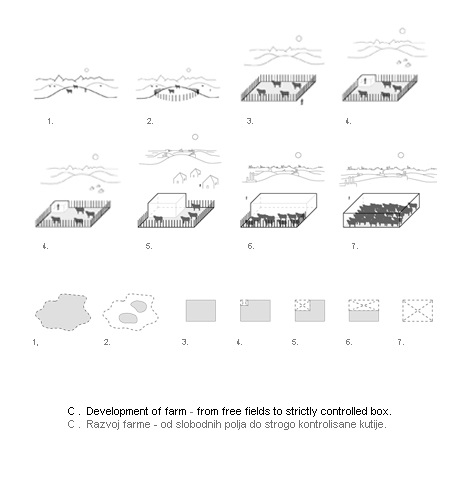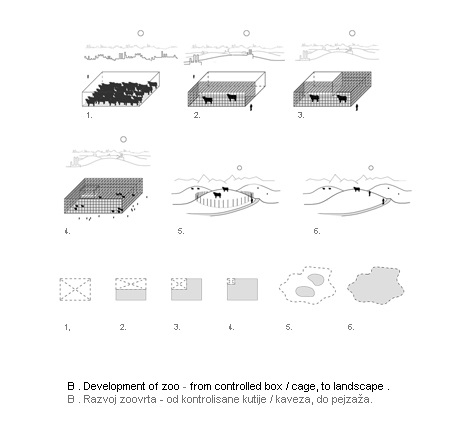EDIBLE SAFARI
This project engages with the relationship between human and animal habitats. It is concerned with the position of the live stock food production within the city limits; and investigates relationship between residential ares and farming landscapes. Moreover the project aims to establish beneficial relationship between recreational grounds, such as city parks and farming land such as grazing field. Although cities occupies only 2 % percent of Earth’s surface, they actually consume 75% of its produce. This is also true for live stock, as it still makes 1/3 of the overall diet of human’s population. Yet, farming is isolated from city life. Therefore, this project will examine possible connections between the flowing categories: the farm, the zoo and the park. The intent is to create space much similar to all three of them, whereby production and processing of food are in direct contact with consumer.
Ovaj projekat se bavi povezivanjem prebivališta ljudi i životinja. Obuhvata pitanje proizvodnje hrane životinjskog porekla unutar gradskih okvira; i istražuje veze između stambenih prostora i poljoprivrednih pejzaža. Takođe cilj projekta je da uspostavi produktivne odnose između rekreacionih (kao što su gradski parkovi) i poljoprivrednih površina (kao što su pašnjaci). Iako gradovi zauzimaju samo 2% ukupne površine Zemlje, oni zapravo koriste 75% njene energije. Ovo se odnosi i na uzgajanje domaćih životinja, kao 1/3 ukupne ishrane ljudske populacije. A ipak, poljoprovreda je izolovana od gradskog života. Stoga, ovaj projekat će ispitati moguće veze između : farme, zoovrta i parka. Namera je kreiranje prostora u okviru tri spomenuta fizička odnosa, gde je proizvodnja i prerada hrane u direktnom kontaktu sa potrošačem.
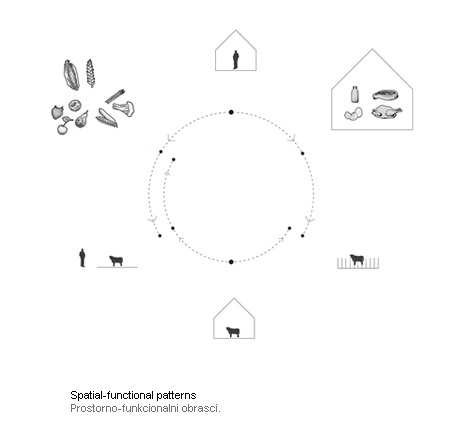
References:
1. Loudon, John Claudius, 1839.An Encyclopædia of Cottage, Farm, and Villa Architecture and Furniture, Hardvard University, London.
2. Horwitz Jamie, Singley Paulette, 2004. A PIG IN EVERY BATHTUB, str. 97-102, Eating Architecture, England.
3. NATIONAL GEOGRAPHIC Education, “zoo, zological park”, ©1996-2014 National Geographic Society, All rights reserved.http://education.nationalgeographic.com/education/encyclopedia/zoo/?ar_a=1
web:
1. http://www.popsci.com/science/article/2012-12/why-wild-animals-are-moving-cities-and-what-do-about-it
2. http://www.animalarchitecture.org/
film:
1. Robert Kenner, Food Inc., Documentary 2008. https://www.youtube.com/watch?v=wW1HYkrPRWg
2. Coe, Joe, Future of zoo; Design and Architecture, CanisiusCollege ISHAR, Njujork, lecture, 2012. https://www.youtube.com/watch?v=aGAeW4exiXo 3.
3. Ned Dodington, Animal architecture, TEDxHouston, 2013. https://www.youtube.com/watch?v=LAJVHzEFDy4
